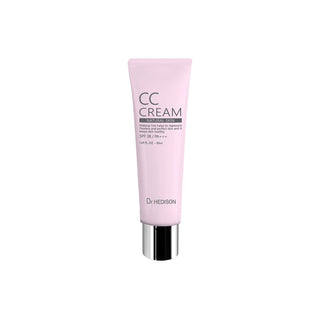What is Korean layering and how to apply it in your daily routine?
| License: e100e6e85f684e27997c4e0523dacf75c3 Download: Click here Alt: skincare product penetrating the skin |
Many of us admire the even, glowing, and smooth skin of people in South Korea and wonder what lies behind this polished appearance. The secret is not only in the products used but also in the method of application – known as Korean layering. This skincare habit, widely adopted, allows you to achieve visible results and gives you control over your daily routine, regardless of your skin type.
Below you will discover what Korean layering involves, how to incorporate it into your skincare ritual, and the practical steps to follow for healthy-looking skin.
What does Korean layering mean in skincare?
Layering involves applying multiple skincare products successively, following a precise order from the most liquid to the densest. This approach comes from the Korean beauty routine, where patience and attention to detail are highly valued.
The concept became popular because each type of product works optimally when applied at the right time. Instead of using creams and serums randomly, you create a structure where each layer supports the next. Practically, this gives your skin the chance to gradually absorb various ingredients without overloading the surface.
The correct order for applying cosmetic products

| License: e11cbcd54dd6a9b42a8060ca25fe27358c Download: Click here Alt: Order of applying skincare products on a simple background |
The success of layering relies on the sequence of products. Follow the rule: from liquid to thick, so each ingredient penetrates the skin effectively.
A simple routine example might look like this:
- Oil-based cleanser + gel or foam cleanser
- Hydrating or soothing toner
- Essence
- Serum/ampoule (concentrated serum)
- Moisturizer
- Night mask (evening only, optional)
- Sunscreen (morning only)
This order prevents absorption blockage and ensures each product works effectively. For long-term results, pay attention to every step and adjust the list according to your needs.
How to apply Korean layering in your daily routine: detailed steps
1. Double cleansing
Cleansing starts with an oil-based cleanser or balm, suitable for removing makeup, SPF, and excess sebum. Follow with a gel or foam cleanser, which removes the remaining impurities without drying out the skin. Check our site for various cleansing options suitable for all skin types.
2. Toning
The next step is applying a toner, preferably alcohol-free, with soothing ingredients. The toner restores skin pH and prepares the skin for the next layer. For instance, a rice extract toner provides immediate hydration.
3. Essence and serums
Essence adds extra hydration, while serums deliver concentrated active ingredients for specific goals, like brightening or reducing wrinkles. Many use vitamin C serums in the morning and niacinamide or peptides in the evening. Explore modern formulas from Beauty of Joseon.
4. Moisturizer
Moisturizer locks in hydration and protects the skin barrier. Choose a light cream if your skin produces oil or a richer one if your skin feels dry. Adapt the texture to the season and your skin’s needs. Check our face cream collection for suitable options.
5. Night mask (if needed, evening)
A layer of night mask can support skin repair and maintain hydration, especially if you sleep in dry or heated rooms.
6. Sunscreen (morning only)
In the morning, the final step is sunscreen. Apply an SPF cream and reapply throughout the day if you spend time outdoors. Find dedicated options in our face SPF collection.
Absorption time
Wait 30–60 seconds between steps. Apply products with gentle patting, not rubbing, to promote absorption.
How to adapt layering to your skin’s needs?
Your routine doesn’t have to be identical every day or overly long. Adjust steps according to your skin type:
- Dry skin: Choose rich essences and creams, apply hydrating masks, and include hyaluronic acid for extra comfort. Select products specially for dry skin.
- Oily or combination skin: Opt for lightweight formulas, oil-free serums, and non-comedogenic gels. Prefer products for combination or oily skin.
- Sensitive skin: Look for products designed for sensitive skin, without fragrance or alcohol, and introduce active ingredients gradually.
Reduce the number of products if your skin reacts. Avoid combining strong actives (e.g., retinol and vitamin C) without dermatological advice. Test new products on a small area before fully incorporating them into your routine.
Benefits of Korean layering
- Hydration remains consistent, even in cold seasons or air-conditioned environments.
- Active ingredients can work effectively as intended.
- The routine becomes easy to personalize – adjust layers according to season or changes in your skin.
- Once established, the process becomes relaxing and gives you a few minutes for yourself, either at the start or end of the day.
Common mistakes and how to avoid them
To achieve desired results, avoid the following:
- Applying products one after another too quickly, without absorption pauses.
- Combining incompatible ingredients (e.g., retinol with AHA/BHA acids or vitamin C).
- Using too many products simultaneously – excess can irritate the skin.
- Not adapting the routine to seasonal changes or your skin’s evolving needs.
- Skipping sunscreen, especially when using exfoliating acids or retinol.
Start with three basic steps (cleanse, moisturizer, SPF) and gradually expand your routine. If irritation or unusual reactions occur, consult a dermatologist.
Practical guide for beginners
If you’re just exploring layering, here are some simple tips:
- Start with a gentle cleanser, a cream suitable for your skin type, and a good sunscreen.
- Introduce new products gradually to monitor for adverse reactions.
- Choose trusted brands with products adhering to K-beauty principles.
- Listen to your skin – if you feel discomfort, reduce steps or active formulas.
The ideal routine varies for each person. Pay attention to your skin’s signals and adjust layers patiently.
Disclaimer: This article is for informational purposes and cannot replace professional consultation. If you experience repeated adverse reactions or have sensitive skin, always consult a doctor or pharmacist before making major changes to your routine.



